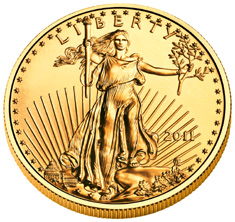 Presidential hopeful Mitt Romney recently said that “You know, I’m not willing to light my hair on fire to try and get support. I am who I am.” If only the Federal Reserve Chairman could be so restrained. Based on recent comments from Fed Chairman Bernanke, it seems likely that he would gladly set both his hair and beard on fire in order to accomplish his mutually exclusive goals of increasing employment while maintaining price stability.
Presidential hopeful Mitt Romney recently said that “You know, I’m not willing to light my hair on fire to try and get support. I am who I am.” If only the Federal Reserve Chairman could be so restrained. Based on recent comments from Fed Chairman Bernanke, it seems likely that he would gladly set both his hair and beard on fire in order to accomplish his mutually exclusive goals of increasing employment while maintaining price stability.
With a stubbornly high rate of unemployment, massive fiscal deficits, very slow economic growth, declining incomes and debt levels that are strangling the U.S. consumer, the Fed is facing a quandary. How can economic growth be stimulated without simultaneously igniting inflation?
Lower interest rates, the most powerful tool in the Fed’s arsenal, has already been fully exploited while providing a zero net benefit for consumers. The zero sum game of lower rates did not prevent the housing market from crashing, has not helped it to recover and has resulted in dramatically reducing interest income for millions of consumers. Every dollar of interest saved by one consumer means one less dollar of income for savers, many of them retirees who suddenly have seen their CD rates drop to near zero.
With rates at zero, the Fed is now forced to use the last resort option of QE, risking higher inflation as it stokes the economy with digitally created dollar bills. Increased inflation is the high risk option that the Fed is willing to take as explained in Bernanke Seen Accepting Faster Inflation as Fed Seeks to Boost Employment.
Federal Reserve Chairman Ben S. Bernanke spent six years pushing for an inflation goal. Now that he has it, some investors are betting he’ll breach the 2 percent target in the short run to lower unemployment.
“The chairman seemed to suggest they will tolerate a misdemeanor on inflation as unemployment continues to fall toward their goal” over several years, said Mark Spindel, chief investment officer at Potomac River Capital, a hedge fund that manages $250 million in Washington.
Policy makers at a March 13 meeting probably won’t deviate from their commitment to hold the main interest rate close to zero at least through late 2014, even if their forecast shows a burst of energy-driven inflation, said Lou Crandall, chief economist at Wrightson ICAP LLC in Jersey City, New Jersey. They’ll probably be more concerned that rising prices will hold back real spending, impeding growth and improvement in the job market, he said.
Crude oil prices have risen 32 percent since the end of the third quarter of 2011 and 6 percent this year. Energy prices could hold the Federal Open Market Committee’s inflation target benchmark, the personal consumption expenditures price index, above the Fed’s 2 percent inflation objective for much of 2012, Crandall said. The PCE rose 2.4 percent for the 12 months ending in January.
Also, workers have weak leverage for increasing wages to compensate for higher costs. Real average weekly earnings have fallen for 10 consecutive months on a year-over-year basis. As energy costs eat up more of consumer expenditures, companies have difficulty raising prices on other goods and services.
“To the extent that PCE inflation is somewhere around 3 percent while unemployment is still above 8 percent, I think there will still be no reaction from the Fed,” said Worah, who’s based in Newport Beach, California.
The expectation among investors that the Fed will allow for a temporary overshoot on the price goal has been “unambiguously bullish” for Treasury Inflation-Protected Securities, Worah said.
Gold, up 18% over just the past year, is also telling us that the Fed is likely to shoot past its goal of attaining a 2% inflation rate. Furthermore, the Fed’s goal of accepting increased inflation as an acceptable risk for increased economic growth is a self defeating zero sum game. By driving up inflation, the Fed has increased living costs for the average consumer, negating any positive net affect from stronger economic growth. Consumers, whose spending makes up 70% of GDP, ultimately can’t spend more without real income growth.
In an interview with CNBC, Jim Grant of Grant’s Interest Rate Observer, and a frequent critic of destructive Federal Reserve monetary policies, says the Fed is manipulating interest rates for the sake of achieving “desirable macro outcomes”. Discussing the Fed’s latest scheme to expand money printing, known as “sterilized bond-buying”, Grant says he is uncomfortable with the program which will create inflation and distortions that will destabilize the entire debt market.
Grant also feels that Bernanke, a self proclaimed “expert’ on the depression of the 1930’s is making fundamentally flawed decisions to forestall Depression II that many feel is looming in front of us. According to Grant, Bernanke can’t “stop talking about the ’30s”, but when the economy fell off a cliff in 1920 – 1921, the government actually balanced the budget and the Fed raised interest rates and the economy soon recovered on its own and not due to running “immense deficits”.
The full interview with Grant is worth listening to. Please click on this link if the video below does not play.
The Fed has only one hand left to play and it will continue to print money, a fact that has not gone unrecognized by the gold and precious metals markets.
